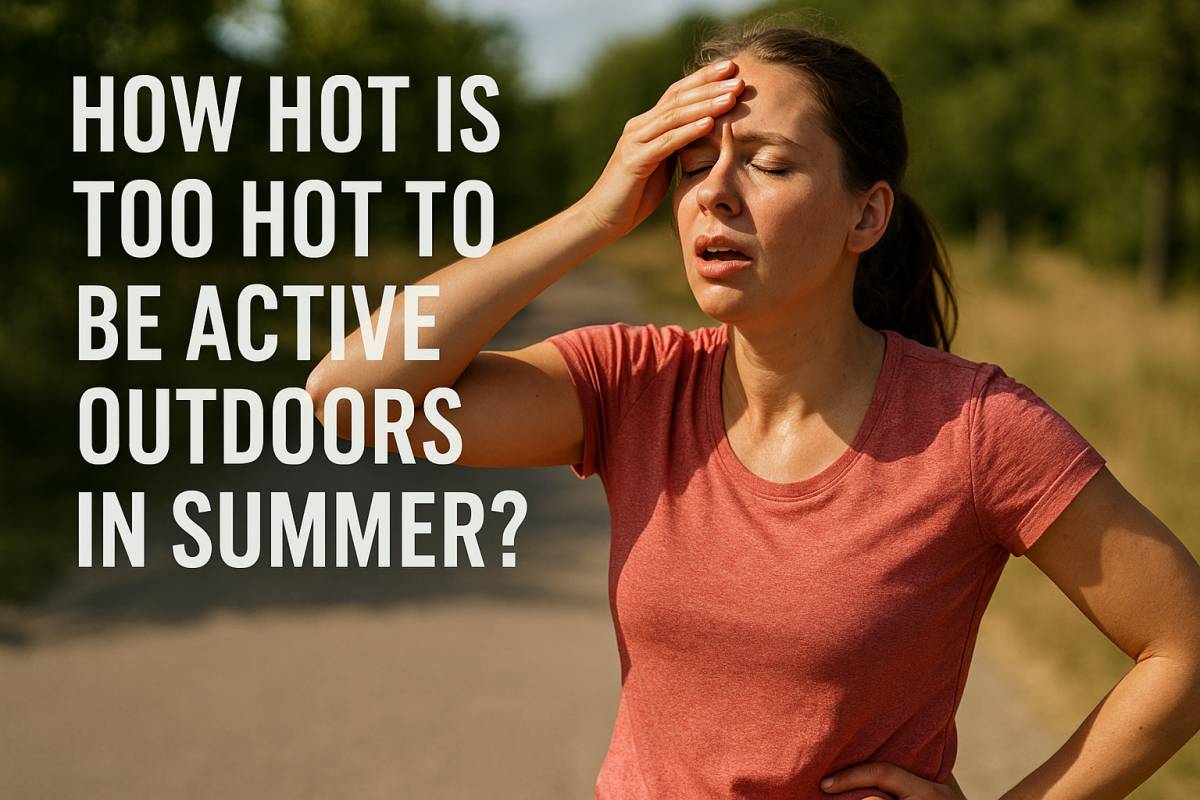How Hot Is Too Hot to Activity Outdoors in Summer?

When temperatures rise above 90°F (32°C), outdoor activity becomes risky, and once the heat index (temperature plus humidity) crosses 100–105°F (38–40°C), it is generally considered too hot for most people to safely exercise or spend long periods outdoors. At these levels, the body struggles to cool itself, increasing the risk of heat exhaustion and heatstroke.
Why Heat Matters More Than Just Temperature
Many people think only the air temperature determines how hot it feels, but that’s not the full story. Humidity, sunlight, wind speed, and even your activity level all play a role. The heat index is the best measure to check because it combines temperature and humidity to show how hot it actually feels to your body.
- 90°F (32°C) with high humidity can feel like 100°F (38°C).
- 100°F (38°C) with high humidity can feel closer to 120°F (49°C).
When humidity is high, sweat doesn’t evaporate properly, which means your body can’t cool down efficiently. That’s when outdoor activity can quickly become dangerous.
The Danger Zones of Outdoor Heat
Here’s a simple breakdown of when it may be too hot to be active outdoors:
- Below 85°F (29°C): Generally safe for most people, especially with hydration.
- 85–90°F (29–32°C): Use caution. Stay hydrated and take breaks in the shade.
- 90–100°F (32–38°C): Risk of heat exhaustion increases, especially with high humidity.
- 100–105°F (38–40°C): Considered unsafe for prolonged outdoor activity.
- Above 105°F (40°C): Too hot for most outdoor activities; high risk of heatstroke.
Signs It’s Too Hot for You Personally
Everyone’s heat tolerance is different. Age, fitness level, medical conditions, and acclimatization all play a role. Watch for these early signs of heat stress:
- Excessive sweating
- Headache or dizziness
- Rapid heartbeat
- Nausea or muscle cramps
- Fatigue or confusion
If you notice these, it’s time to rest, rehydrate, and cool down immediately.
Outdoor Activity Safety Tips in Summer
If you love being outside, you don’t have to stop during hot weather—you just need to be smart about it.
1. Check the Heat Index Before You Go
Always check the heat index, not just the temperature. Weather apps and local forecasts often provide this.
2. Pick the Right Time of Day
- Best: Early morning (5–8 a.m.) or evening (after 6 p.m.).
- Worst: Midday (10 a.m.–4 p.m.), when the sun is strongest.
3. Dress Smart
Lightweight, breathable, and light-colored clothing helps reflect heat. A hat and sunglasses protect from direct sunlight.
4. Stay Hydrated
Drink water regularly, not just when you feel thirsty. If you’re exercising intensely, add electrolytes.
5. Take Frequent Breaks
Rest in shaded or air-conditioned areas to let your body recover.
6. Listen to Your Body
Don’t push through dizziness, cramps, or extreme fatigue—these are warning signs.
Activities That Are More Risky in Extreme Heat
Not all outdoor activities are equal when it’s hot.
- High-risk: Running, cycling, sports, or anything physically demanding.
- Moderate-risk: Walking, hiking, or gardening with breaks.
- Low-risk: Relaxing outdoors in the shade, swimming (though hydration is still important).
Who Should Be Extra Careful
Some groups are more vulnerable to heat than others:
- Children and older adults (weaker temperature regulation).
- People with heart or respiratory conditions.
- Athletes and outdoor workers (long exposure times).
- Pet owners (dogs and cats also suffer heat stress quickly).
When to Stay Indoors
If the heat index is above 100–105°F (38–40°C), experts recommend avoiding strenuous activity outdoors altogether. On such days, it’s better to move your workouts indoors, go swimming, or focus on indoor hobbies.
Final Thoughts: Balance Safety and Enjoyment
So, how hot is too hot to be active outdoors in summer? While 90°F (32°C) is a clear caution zone, once the heat index climbs above 100°F (38°C), it’s generally unsafe for extended outdoor activities. The key is knowing your limits, paying attention to weather conditions, and protecting your body with hydration, shade, and smart timing.
Summer is meant to be enjoyed—but not at the cost of your health. By making mindful choices, you can stay active, safe, and cool even on the hottest days.








